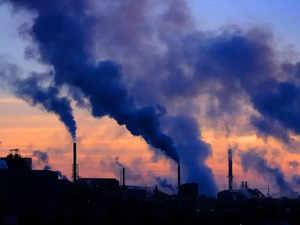 Agencies
AgenciesRelated
- WHO warns alarming levels of physical inactivity among Indians, says women more physically inactive than men
- What is the H5N1 virus that is growingly rapidly? Here is everything you need to know
- Does COVID-19 cause long-term health issues like mini-strokes, pulmonary scarring, and irritable bowel syndrome? Details here
- People in India exposed to humid heat extremes increased by 67 crore from 1951-2020: Study
Findings and Impact
The study found that daily exposure to PM2.5 pollution significantly increases the risk of mortality in these cities. Specifically, a 10 microgram per cubic metre increase in PM2.5 levels over two days was associated with a 1.4% rise in daily mortality rates. This underscores the direct link between air pollution and public health outcomes.
City-specific Insights
Delhi, notorious for its severe air quality, reported a 0.31% increase in daily mortality for every 10 microgram per cubic metre rise in PM2.5 levels. Conversely, Bengaluru showed a more pronounced impact, with a 3.06% rise, suggesting that cities with initially lower pollution levels may experience heightened health risks from even moderate increases in pollution.
Broader Health Implications
The study challenges India's current air quality standards, which allow up to 60 micrograms per cubic metre of PM2.5 over a 24-hour period—four times higher than WHO guidelines of 15 micrograms per cubic metre. Researchers argue that stricter adherence to global standards could mitigate the health risks associated with air pollution.
Background and Methodology
The research analyzed data from approximately 3.6 million deaths recorded between 2008 and 2019 across the ten cities. It employed advanced statistical models to correlate PM2.5 levels with mortality rates, providing a nuanced understanding of the impact of air pollution on public health.
The links between daily exposure to PM2.5 pollution and locally created pollutants were found to be stronger in models which the researchers used to explore cause-and-effect relationships.
Therefore, it was possible that the locally generated pollutants were causing these excess deaths, the authors said.
"The causal effects were especially strong in cities with lower concentrations of air pollution, such as (Bengaluru), Chennai, and Shimla," the authors wrote.
The study, "the first multi-city, time series analysis of short-term exposure to PM2.5 and daily mortality in India," looked at roughly 36 lakh daily deaths across ten Indian cities between 2008 and 2019. Other cities included in the analysis were Ahmedabad, Hyderabad, Kolkata, Pune, Shimla and Varanasi.
(With inputs from PTI)
(Catch all the Business News, Breaking News, Budget 2024 Events and Latest News Updates on The Economic Times.)
Subscribe to The Economic Times Prime and read the ET ePaper online.
Read More News on
(Catch all the Business News, Breaking News, Budget 2024 Events and Latest News Updates on The Economic Times.)
Subscribe to The Economic Times Prime and read the ET ePaper online.












 Get Unlimited Access to The Economic Times
Get Unlimited Access to The Economic Times
